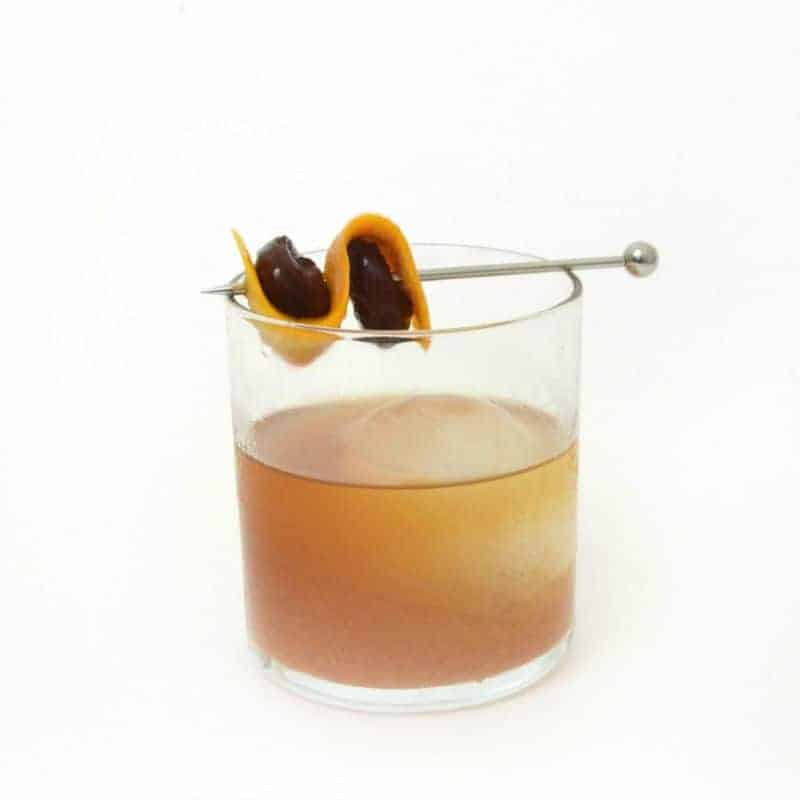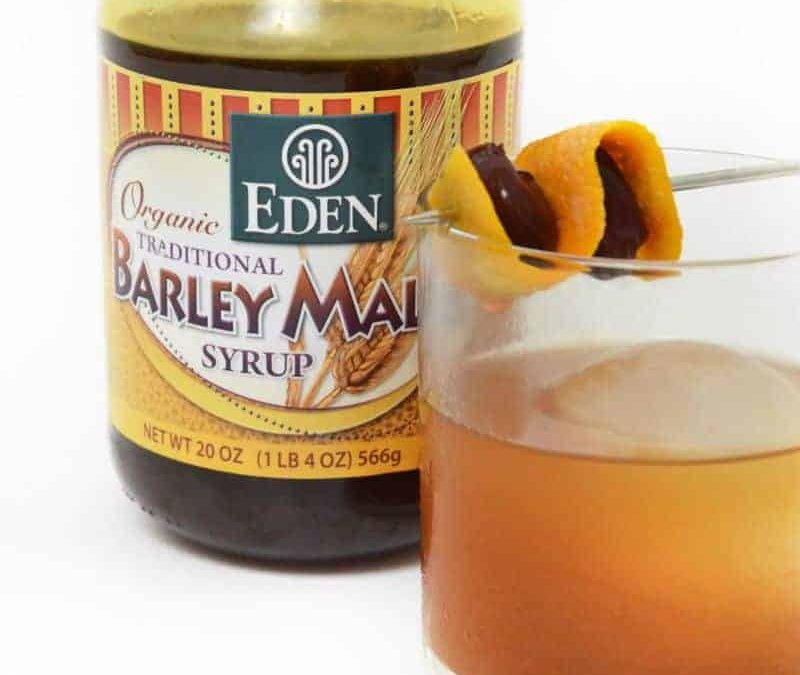Recently I was walking through the aisles of Berkeley Bowl and I ended up staring at their section of alternative sweeteners, of which they have quite a few. They stock an impressive selection of the usual candidates of sweeteners like refined sugar, high fructose corn syrup, brown sugar of every shade, turbinado, etc. They also happen to stock a great selection of alternative sweeteners such as pure cane syrup, rice syrup, and all of the colors of the rainbow of synthetic sweeteners.
This particular trip I was inspired with Barley Malt Syrup and how it would taste in cocktails. I have been considering trying this in cocktails previously, but have always passed it up in favor of exotic fruits. Today was the day that I was going to give it a try.
The theory of using a sugar like this seems to be pretty straight forward. Whiskey is made from malted wheat, barley and/or corn so the flavors should help to reinforce the spirit. If you take a look at Tommy’s Margarita, or a Mojito made with cane syrup, it’s the same idea, you are using the same base material for a sweetener that the spirit is made from. It seems like this is going to be pretty straight forward process then.
How It’s Made
From what I can gather, by making a Barley malt syrup, you are following very similar processes that beer and whiskey makers use in order to make their respective products. First the grains are combined with water to induce germination of the grains, basically a fancy term of seeds trying to grow into a plant. After a few days the grains are then dried out and roasted in order to achieve a few different levels of toast. A lightly roasted grain will give a light in color grain. If you were to make beer from this, I would imagine that it would turn into something similar to a pilsner or a light ale. (I’m not a brewer) If you were to continue the roasting process eventually you would end up with a very dark roast that I imagine could be used to create a stout or porter.
After the roasting process, the dried and roasted grains are added to water and boiled in order to extract the sugars from the grains. This is when Barley malt syrup is made. Now that the water is sweetened from the sugars that extracted during the boiling process, if you were to add yeast, wonderful things begin to happen and you can possibly have a decent beer on your hands, or the base alcohol you need in order to distill this beautiful liquid into even more beautiful whiskey.

Useful Information about Barley Syrup (aka Getting down with the geeky stuff)
I can’t help the fact that I’m a geek, so I try to get as detailed as possible when I begin to look at cocktail ingredients. If you’ve taken our cocktail training course, you can attest to the level of detail that I like to get into.
With your average simple syrup, you usually have 3 different molecules doing all of the sweetening. First is sucrose, or regular old table sugar. Sucrose will then dissolve into 2 smaller sugars: Fructose and glucose.
With Barley Syrup, the majority of the syrup is made up of a sugar known as Maltose. Roughly 65 % of the dry weight will be made up of this sugar. Around 30 % is made up of other sugars, fiber, minerals and the last 3 % being made up of proteins. As a result Barley syrup is around half as sweet as table sugar and has a lot more flavor.
- Half as sweet as table sugar (Sucrose)
- Lower on the glycemic index compared to Sucrose (useful if you are monitoring your blood sugar levels)
- Barley syrup is not a gluten-free ingredient. I know this is obvious to most, but I guarantee a guest will eventually ask you this.
- Since it is high in fiber, this might be a great alternative to Metamusil.
- Using Barley syrup in cocktails will produce a foam when shaken. (See comments in the Harvest Whiskey Sour)
Applications in Cocktails
The flavor profile of Barley malt Syrup is exactly what you would expect: Big on flavor, malty, earthy and slightly sweet. Using it straight out of the jar will overpower most cocktail ingredients and not deliver the sweetness that you would expect. I decided to add it to a rich simple syrup to dilute the flavor and increase the sweetness.
Barley Malt Cocktail Syrup
- 1 cup refined white sugar
- 0.50 cup water
- 0.25 cup Barley syrup
The resulting syrup is exactly what I was hoping for, big on flavor and sweet. The malty notes definitely come through, but not overpowering. My first thought upon tasting this syrup is “I can’t wait to make an Old Fashioned with this.”
Harvest Old Fashioned
This adaptation of the Old Fashioned was like drinking Christmas. The syrup enhances the spicy notes of the rye and enhances the baking spice notes that are present in the bitters. (You may recall we actually posted this cocktail last Thursday as a sneak peek!) I’ll be sipping on these during the holiday season… and, you know, the rest of the year.
Harvest Old Fashioned
Here’s a sneak peek at next week – we’re using Barley Syrup in this Old Fashioned.
INGREDIENTS
- 1 1/2 oz Bourbon Bulliet
- 1/2 oz Barley Malt Syrup Eden
- 2 dashes Old Fashioned Bitters Fee Brothers
Barley Malt Cocktail Syrup
- 1 cup rWhite Suga
- 1/2 cupwater
- 1/4 cupBarley Syrup
INSTRUCTIONS
- Combine all ingredients in a mixing glass with ice and stir.
- Strain into a Bucket glass.
- Garnish with an orange peel and a maraschino (or brandied) cherry.
Barley Malt Cocktail Syrup
- Warm the water and sugar and stir until it has completely dissolved.
- Add Barley Syrup and stir until incorporated.
- Cool completely before using

Harvest Whiskey Sour

- 1.5 oz Bourbon ( I used Bulleit)
- 0.75 oz fresh lemon juice
- 0.50 oz Barley Malt Cocktail Syrup
Combine all ingredients in a mixing tin and shake to chill and dilute. Fine strain the cocktail into a coupe or spirits glass, and garnish it with an orange peel and a maraschino (or brandied) cherry.
This adaptation of the classic whiskey sour is an absolute home run. The malty notes reinforce the bourbon profile without being too intense. The color that the Barley Malt Cocktail Syrup adds to the drink is a beautiful shade of orange that makes the drink look like a glass of orange juice.
One of the things I was not expecting was the layer of foam that developed across the drink. Since the Barley Malt Syrup contains 3% protein, it is no surprise that the foam developed, but I did not expect it to last as long as it did. The foam reminds me of the foam that develops when you shake a cocktail made with fresh pineapple juice. I’m looking forward to making this cocktail again with egg whites.
Conclusion
Barley Malt Syrup is a great way to bring another layer of flavor to a cocktail and enhance the malt profile in whiskey. Since it is so intense in flavor, I would recommend diluting it with either rich simple syrup or regular simple syrup for use in cocktails. When using this syrup with bitters that contain hard spices like cinnamon, nutmeg, or even cardamom, I would recommend cutting the amount of bitters in the drink by half unless you want that spice profile to be a main focus.
These are only a few examples of cocktails that can be made with this type of syrup. Consider using this with any whiskey drinks that you are already making. Have fun experimenting and I’d love to see some of the drinks that you come up with.






I’m intrigued! I need to try this. I have a vague memory of my grandmother using Barley Malt Syrup for..something?
I think your grandmother was a very smart lady, Brian 🙂